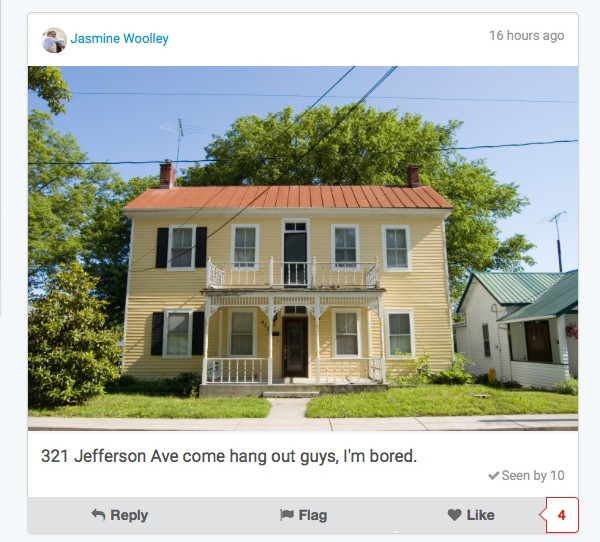Kids test-drive social media sites – minus the risks
By Susan Kelley
Children often learn in school about appropriate online behavior and media literacy. But they don’t have anywhere to practice those skills before they jump onto real-world social media sites – and face the real-world risks that come with them.
A new program of Cornell’s Social Media Lab has changed that.
Its social media simulator, Social Media TestDrive, lets kids practice being online while ensuring their mistakes won’t come back to haunt them, online or off.
Natalie Bazarova, director of the lab, associate professor of communication and parent of an 11-year old boy, compares it to a novice driver using a driving simulator. They can crash into a “wall” before ever getting behind the wheel.
“Kids who are middle school age are not supposed to be on social media, but they hear about Facebook, Twitter,” she said. “For them, TestDrive is an opportunity to try it in a safe environment. It’s hands-on. They’re not just being lectured on it.”
The simulation site offers three lesson plans, covering safe posting and presentation, cyberbullying, and digital literacy, including how to identify credible sources. In each module, kids are asked to take a pre-quiz, to test their background knowledge and previous experience with social media.
Then they’re directed onto the site where they scroll through a newsfeed with posts such as photos of dogs, family and food, similar to Facebook or Instagram sites.
But the simulator is also peppered with risky posts. A photo of a house is accompanied by the text “312 Jefferson Ave come hang out guys, I’m bored.” Another shows a credit card – including its numbers – and the text, “Dad let me borrow his card for the mall. Shopping anyone?” The cyberbullying module includes posts showing kids being mean to each other. To a boy’s post that says, “Anyone want to go to the movies tomorrow? :D,” a girl replies. “No one wants to hang out with you :P”
Instead of interacting with strangers on the open internet, kids interact with “bots”: preprogrammed, simulated “users” that act and respond in realistic ways. TestDrive users also are separated into their own versions of the site, so their actions can’t follow them into the real world.
Users “like” posts that show good behavior or present credible sources. They can also flag a post, which alerts an administrator or responsible adult. The lesson plan encourages students who see cyberbullying to report it or respond in a way that alerts the bully that they’re doing something wrong, such as, “You sound like a jerk for saying that.”
“We’re training them to recognize cyberbullying and also to respond in appropriate ways,” Bazarova said.
Kids can create their own posts, and evaluate them afterward with an educator and other users. A post-activity quiz gauges how much they’ve learned.
“What we want to promote is critical thinking skills that apply across all sorts of platforms in all kinds of different situations,” said Jessie Taft, lab manager.
Postdoctoral researcher Dominic Difranzo created the platform as a way to investigate the dynamics of cyberbullying. The team then integrated it with publicly available curricula from Harvard University, Fordham University and Common Sense Media.
Ten children in Seneca County have used the curriculum so far, Taft said. “We’ve gotten good feedback from kids, who said they would rather learn about these issues in this environment than just from a lecture.”
The lab is now working with the Program for Research on Youth Development and Engagement, part of Cornell’s Bronfenbrenner Center for Translational Research, to offer the curriculum to kids ages 10-13 across New York state, with the help of 4-H programs. Bazarova envisions it as a scalable, long-term project, with more modules in the works, she said.
Crucially, the simulator doesn’t discourage kids from using social media, Bazarova said.
“If you say to kids, ‘Stay away from social media’ – and that’s impossible – it wouldn’t remove all the risks; it would also remove all kinds of opportunities,” she said. “This is teaching them how to be responsible social media users, how to be thoughtful, informed critical thinkers. We don’t want to shut down those opportunities; we want kids to take advantage of them.”
Media Contact
Get Cornell news delivered right to your inbox.
Subscribe